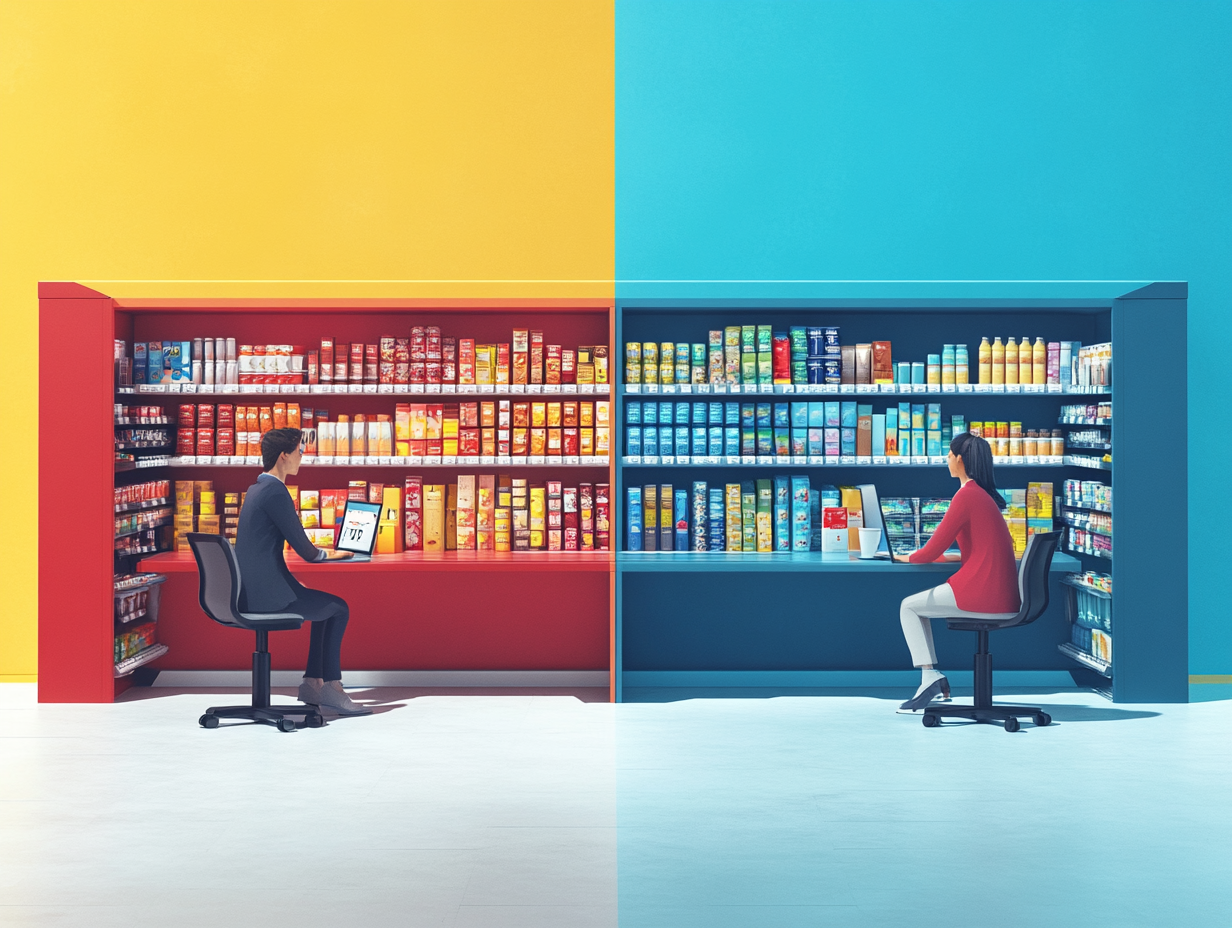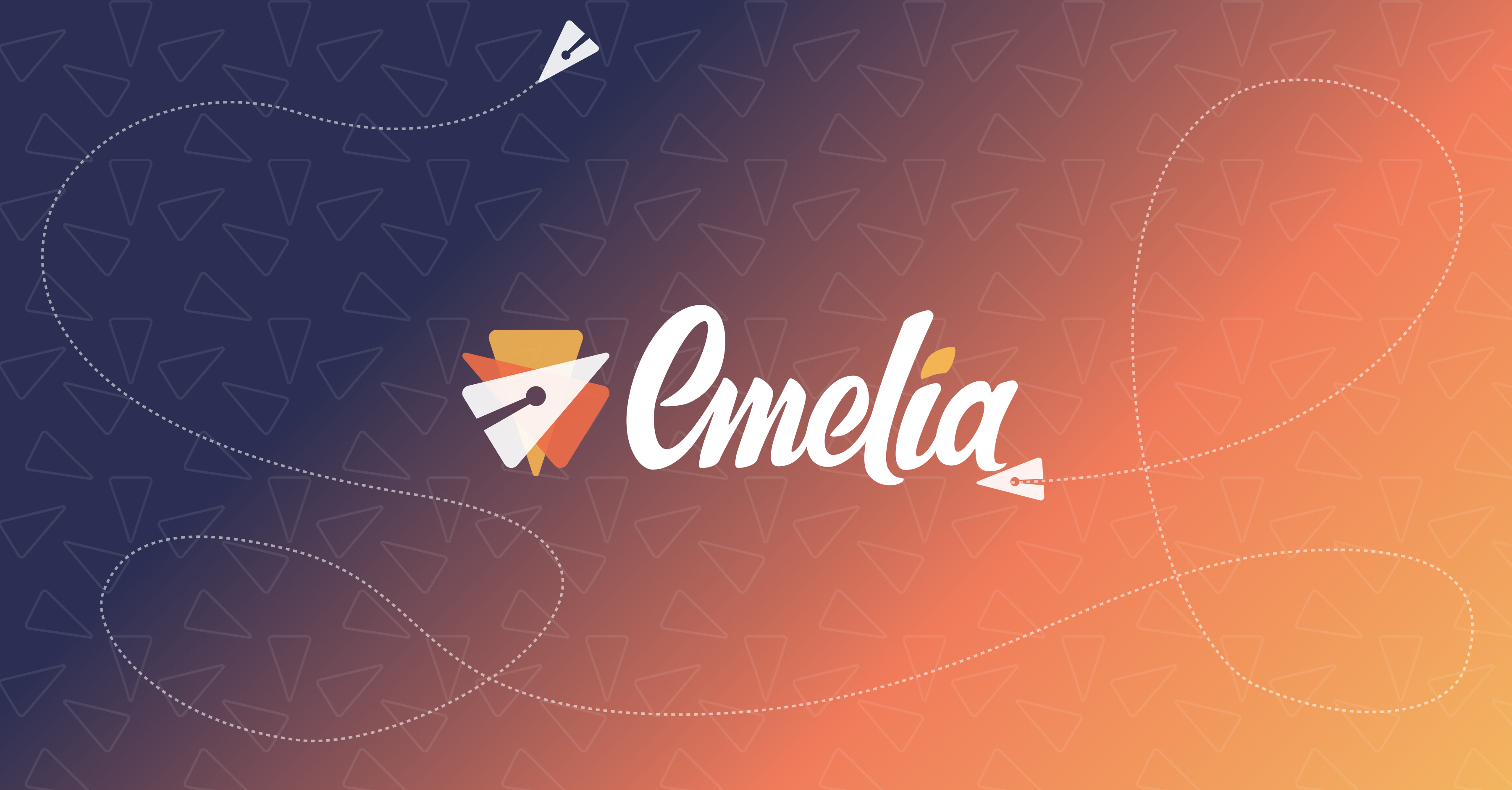
Back to hub
Blog
Tips and training
Marketing
Customers vs Consumers: Understanding the Key Differences for Sucess

Mathieu Co-founder
Published on May 16, 2025Updated on Aug 5, 2025
Why is this distinction important?
Understanding the differences between customers and consumers provides insights businesses can use to create specific and effective marketing strategies. Demystifying these terms can assist in developing a deep understanding of the customer base, consumer behavior, and quality of products.
Have you ever found yourself using "customer" and "consumer" interchangeably in business conversations? Don't worry; you're not alone! While they might seem like synonyms at first glance, these terms actually represent distinct roles in the business ecosystem. And trust me, knowing the difference isn't just semantic nitpicking—it can revolutionize your marketing strategy and significantly impact your bottom line.
In today's competitive business landscape, precision matters. Understanding this distinction helps businesses tailor their marketing, sales, and product development strategies more effectively. By targeting each group's specific needs and preferences, businesses can enhance user experience, customer satisfaction, and ultimately, loyalty and profitability.
But before we dive into why this matters for your business (and how tools like Emelia.io can help you leverage these insights), let's clear up the confusion once and for all.

Customers vs Consumers: The Fundamental Distinction
What Is a Customer?
A customer is anyone, individual or business, who purchases a product or service. Unlike a consumer, who is specifically the end user of the product or service, a customer may or may not use the product directly.
Think of customers as the decision-makers, the ones who pull out their credit cards, sign the contracts, and make the actual purchase. Your customer is the party that purchases your product or service. Whether this is a one-time deal or a recurring transaction, customers are your bread and butter.
After all, they're the ones keeping your business afloat with their purchasing power!
For example, if I walk into my favorite bookstore to buy a novel, I am a customer. However, whether I read the novel or wrap it up and send it to a friend as a gift, my status as that bookstore's customer doesn't change. Customers are a critical part of any business, as they're the primary source of revenue.
What Is a Consumer?

In simple terms, a consumer is the person who actually uses a product or service, the end user. They're the ones experiencing the benefits (or drawbacks) of whatever they're consuming.
Consumers are the end users in the supply chain, which means they use products to satisfy their own needs or desires. In economics, the collective behavior of consumers drives market trends, production decisions, and business pricing strategies.
To put it simply, consumers are those who actually use, eat, wear, or otherwise benefit from the products or services, regardless of who purchased them.
When Customers and Consumers Are the Same Person
In many cases, the customer and consumer roles overlap in a single individual. You might be thinking, "Wait a minute, isn't that the same as a consumer?" Well, not always! While sometimes the customer and the consumer are the same person (like when you buy a cup of coffee for yourself), there are times when they're different. For instance, if you're buying a toy for your niece's birthday, you'd be the customer (you're making the purchase), but your niece would be the consumer (she's the one playing with the toy).
Key Differences Between Customers and Consumers
Let's break down the main differences that set customers and consumers apart:
1. Role in the Purchase Process
While a consumer encompasses anyone who utilizes a product or service, a customer specifically refers to the person who actually pays for it. Consumers can also be customers and are often the end-users of the products or services, making them equally important for businesses to consider.
2. Decision-Making Power
Customers hold the purchasing power. They decide whether to buy, when to buy, and how much to spend. Consumers, especially when they're not the ones making the purchase, may influence but don't control the final decision.
3. Target of Marketing Efforts
Understanding the difference between a consumer and a customer is like having a secret weapon for your business. It helps you to make smart choices in your marketing, sales, and overall business strategy. Let's break it down: imagine a business discovers that a lot of kids love their stuff – those kids are the consumers. Armed with this insight, the business can design cool things that appeal to youngsters and, at the same time, convince the real buyers (the parents) to make the purchase. This savvy approach is like the superhero move in today's world of marketing and sales, essential for any business looking to keep the money flowing steadily.
4. Demographics
Another key difference between a customer and a consumer involves their demographics. While a customer is typically a single person, or a company operating as a trade customer, a consumer might be anybody.
This distinction becomes particularly important when designing targeted marketing campaigns.
5. Business Relationship
Usually a client relationship is deeper, requires more involvement, and is more fruitful. A "customer" suggests a one-time sale – like buying something from a grocery store, restaurant, amusement park, etc. However there can be "repeat" customers. It's usually only focused on an economic exchange.
Types of Customers and Consumers
Understanding the different categories within each group can further enhance your marketing strategy.
Types of Customers
Loyal Customers: They are less in numbers but increase more profit and sales as they are completely satisfied with the product or service.
Discount Customers: They also regular visitors but buy when they are offered discounts or they purchase only low-cost goods.
Impulsive Customers: These types of customers are hard to convince, as they don't go for a specific product, but buy whatever they feel is good and fruitful at that particular point of time.
Need-Based Customers: These customers buy only those products which they are in need of or habituated with.
Trade Customers: These are usually businesses that purchase products with the end goal of reselling them to other businesses. Trade customers make their money by purchasing products and services and selling them to end users at a higher price.
Types of Consumers
Discrete Consumers: Discrete consumers make infrequent or one-time purchases, often for durable or long-lasting items. They don't buy these items regularly because they don't need to replace them often.
Commercial Consumers: Commercial consumers predominantly consist of businesses or organized groups of individuals who frequently purchase goods in large quantities. Additionally, an individual may transition into a commercial consumer when he begins buying larger quantities of goods together, often to take advantage of cost savings or bulk discounts.
Inferior Goods Consumers: An inferior goods consumer looks for lower prices due to their income or current financial status. They typically wait for lower prices when purchasing a product or service and generally only buy essentials. Inferior goods consumers are unlikely to regularly consume any luxury goods and generally only buy what they require, not what they want.
(Image: An infographic showing the different types of customers and consumers with brief descriptions)
Why the Distinction Matters for Your Business
1. Targeted Marketing Strategies
Understanding the distinction between consumers and customers is crucial for businesses aiming to tailor their strategies effectively. This article delves into the differences between consumers and customers, providing insights that can help businesses in targeting, product development, marketing, and sales strategies.
When you know exactly who's making the purchasing decisions versus who's using your product, you can craft different messages for each audience. For instance, if you're selling children's toys, you'll want marketing that appeals to both the children who'll play with them (consumers) and the parents who'll buy them (customers).
2. Product Development and Innovation
For businesses, understanding the distinction is important when designing products or services. A customer might have different needs or desires than a consumer, so knowing both can lead to better product development and more effective customer service.
Think about baby products—the parents are making the purchase decision based on factors like safety, price, and convenience, while the babies are the ones who'll actually use the products and benefit (or not!) from their design.
3. Improved Customer Service
Every business has customers, but not all have consumers. Knowing the difference helps greatly because it guides you in providing the right support for your unique clientele. Take a textile wholesaler, for instance.
Your approach to service might differ depending on whether you're addressing the needs of the purchasing agent (customer) or the end user (consumer).
4. Enhanced Revenue Opportunities
For any business to grow it is very important to understand the difference between a customer and a consumer. In most cases, the customer is the consumer but there are several cases where there is a remarkable difference between the two. And this becomes very important for businesses to understand. Understanding the key differences between a customer and a consumer can help companies have better strategies, better communication, streamlined marketing activities etc.
How to Leverage This Understanding with Emelia.io

At Emelia.io, we understand the nuances between customers and consumers, and our AI-powered prospecting tools are designed to help you target both effectively. Here's how our platform can help you capitalize on this understanding:
1. Precision Targeting with AI-Powered Tools
Emelia simplifies LinkedIn and email prospecting, helping you find future clients with an easy-to-use platform and advanced technology. Automate contact with your prospects and easily identify your future clients. Save time, engage and boost your growth. Launch email campaigns on a small or large scale in an ultra-simple tool for easy use.
Our platform allows you to segment your outreach based on whether you're targeting customers (decision-makers) or aiming to create demand among consumers (end-users). This precision targeting leads to higher conversion rates and more effective campaigns.
2. Data-Driven Insights for Better Decision-Making
Emelia's platform offers detailed analytics, allowing companies to track opens, clicks, and replies in real-time. This feature provides valuable insights into the effectiveness of cold emailing campaigns, helping companies analyze their results and improve their strategies.
By understanding how both customers and consumers interact with your marketing messages, you can refine your approach for maximum impact.
3. Personalized Outreach at Scale
Don't just personalize your campaigns, save time! AI analyzes responses to adjust your strategy.
With Emelia.io, you can create customized outreach sequences that speak directly to the needs and pain points of both customers and consumers, scaling your personalization efforts without sacrificing quality.
4. Enhanced Deliverability and Engagement
Emelia finds many more 100% reliable email addresses and this is very important for the deliverability of your mailboxes in the long term. If you have too many hard bounces, then you risk lowering the rate of your emails ending up in your prospects' main inbox.
Our platform ensures your messages reach the right people at the right time, increasing engagement and response rates whether you're targeting customers, consumers, or both.
Practical Strategies for Engaging Both Customers and Consumers
Now that we understand the difference, let's explore some practical strategies to engage both groups effectively:
1. Create Dual-Purpose Content
Develop content that appeals to both the decision-maker (customer) and end-user (consumer). For B2B products, this might mean highlighting both the ROI for the purchasing manager and the ease-of-use for the employees who'll be using it daily.
2. Implement Multi-Level Marketing Campaigns
This highlights that this phenomenon of customers vs consumers is present in everyday business. A lot of companies ensure that their marketing activities are aligned with this fact so that they can attract customers into buying products and services for their family or friends, who are the consumers. Mostly industries involved in products for infants and elders or related to technological products & services have this differentiation between customers and consumers. Companies often have their advertisement and marketing campaigns made in such a way that they cater to both the customer and consumers, and that it tempts them to make a purchase of the same.
3. Leverage AI for Personalized Communication
Use Emelia.io's AI-powered email prospecting to create personalized outreach that resonates with both customers and consumers. Now that you have all that email content, you can use it to create one-to-one personalization. Keep in mind that your AI strategy should be connected to your data and customer engagement strategy for best results. You can use the historical data from your customer relationship management (CRM) system to integrate dynamic content, offers, and recommendations for individual customers. Based on how your customer interacts, AI can then power the next best email to continue the journey. Your AI-powered email content now understands your specific customer preferences and business goals, making it easier for you to tailor your messaging. This type of content creation simultaneously streamlines and scales the process of customization.
4. Collect and Act on Feedback from Both Groups
Make sure you're gathering insights from both customers and consumers to inform your product development and marketing strategies. This holistic approach ensures you're meeting the needs of everyone involved in the purchase and consumption process.
The Future of Customer and Consumer Relationships in the AI Era
As we move further into the age of AI and automation, the distinction between customers and consumers will become even more crucial. As you adopt and adapt AI, you'll see benefits like increased personalization at scale, improved engagement, and reduced costs. However, there could be undesirable consequences if you don't grasp the fundamentals.
AI tools like Emelia.io are making it easier than ever to target the right message to the right person at the right time. By understanding whether you're speaking to a customer, a consumer, or someone who fills both roles, you can craft more relevant and compelling communications that drive business results.
The combination of LinkedIn scraping and Emelia's email finder provides an integral solution for detecting, targeting and communicating with qualified prospects, taking your prospecting strategy to new heights. Emelia encompasses a variety of advanced features designed to make scraping for your cold emailing campaigns as efficient as possible: Data extraction: data retrieval from LinkedIn Sales Navigator · Data cleansing: automatic adjustment and elimination of anomalies · Email Finder: an email enrichment system for accurate, high-quality data collection.
Conclusion: Harnessing the Power of Understanding
The difference between customers and consumers is more than just semantic nitpicking—it's a fundamental business insight that can transform your marketing strategy and boost your bottom line. By understanding who's making the purchase decisions and who's actually using your products or services, you can craft more targeted, effective campaigns that resonate with both groups.
At Emelia.io, we're committed to helping you leverage this understanding through our AI-powered prospecting tools. Whether you're targeting customers, consumers, or both, our platform provides the precision, personalization, and analytics you need to succeed in today's competitive business landscape.
Ready to take your prospecting to the next level? Try Emelia.io today and discover how understanding the customer-consumer distinction can revolutionize your business growth.

Clear, transparent prices without hidden fees
No commitment, prices to help you increase your prospecting.
Credits
May use it for :
Find Emails
AI Action
Phone Finder
Verify Emails
€19per month
1,000
5,000
10,000
50,000
100,000
1,000 Emails found
1,000 AI Actions
20 Number
4,000 Verify
€19per month
Discover other articles that might interest you !
See all articlesTips and training
Published on May 18, 2025
LinkedIn URL in a Flash: Quick Guide to Your Profile
 Niels Co-founder
Niels Co-founderRead more
Software
Published on Nov 4, 2025
5 Customer Success Tools That'll Actually Stop Your Customers From Ghosting You
 Niels Co-founder
Niels Co-founderRead more
Software
Published on Nov 5, 2025
5 Product Management Software Tools That'll Actually Make Your Life Easier (Not Harder)
 Niels Co-founder
Niels Co-founderRead more
Tips and training
Published on Dec 5, 2022
Few things to avoid in your campaigns
 Niels Co-founder
Niels Co-founderRead more
Software
Published on Nov 3, 2025
4 Data Management Platform DMP Tools That Actually Deliver Results (2025 Guide)
 Niels Co-founder
Niels Co-founderRead more
Software
Published on Feb 17, 2024
5 alternatives to Lemwarm for your Deliverability in 2025
 Niels Co-founder
Niels Co-founderRead more
Made with ❤ for Growth Marketers by Growth Marketers
Copyright © 2025 Emelia All Rights Reserved
